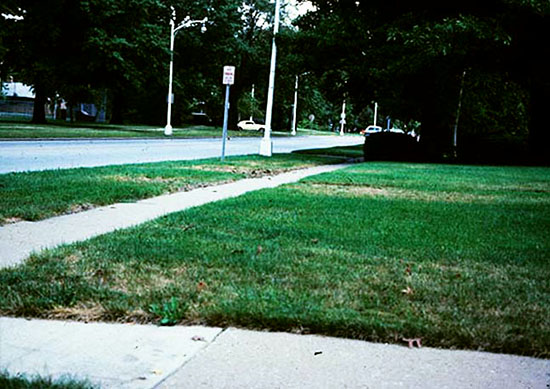Issue 15, August 31, 2015
White Grubs
It's time to be watchful for white grub damage in turf areas. Damage is most likely in drier areas, such as the tops of berms and south-facing slopes. Portions of the state experiencing lower rainfall such as northwestern, southwestern, and southeastern Illinois are more likely to have obvious grub damage.

White grub damage.
With sufficient soil moisture, turf will look fine even with marginally high white grub numbers because the grass grows new roots fast enough to replace those being eaten by the grubs. Well-watered turf with grub numbers as high as 20 per square foot may look fine, whereas un-watered turf is likely to wilt and turn brown with 8-10 grubs per square foot. High use, watered turf such as soccer and football fields can show grub injury with even fewer grubs.
Thus, an alternative to insecticide treatment at this time of year is increased irrigation if the scouted white grub population is only marginally high. If September brings cooler temperatures and increased rainfall, infested cool-season turfgrasses are likely to grow well without irrigation. Depending on the weather, irrigation may only be needed for a couple of weeks during the transition to cooler, wetter fall weather.
As stated in the last issue, high grub numbers can be reduced to non-damaging levels in three to five days with an application of trichlorfon (Dylox) or chlorantroniliprole (Acelepryn). (Phil Nixon)
Author:
Phil Nixon